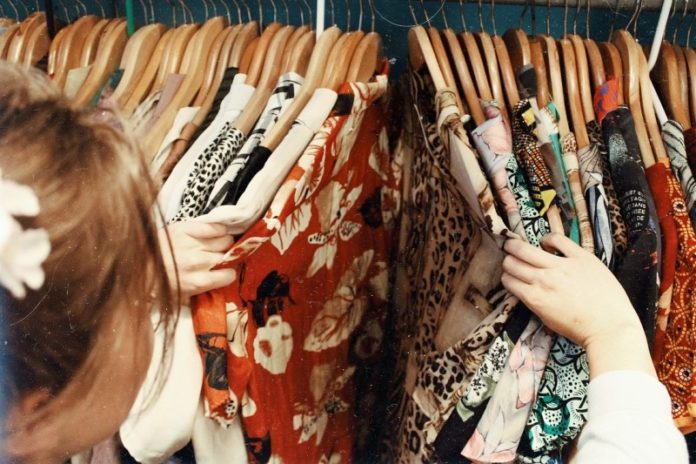As we shared in a recent post, there is currently an environmental crisis resulting from textile waste. But the problem is not all in the manufacturing, as previously discussed. Let’s uncover the consumer contribution to textile waste and reveal ways you can help heal the environment with your personal habits and choices.
Fast Fashion
Clothing trends and fashion used to be broken into, at most, four seasons. You know… the ones on the calendar? Clothes bought for those four seasons were often durable and worn for years. Enter the trend of fast fashion. Clothes are now manufactured to be much less durable because they are expected to only be worn a few months––then discarded for the newest trend. Depending on the model you subscribe to, there are anywhere from 10-50 “microseasons” in fashion. In other words, the new blouse appropriate for the first two weeks of March may not be the right look for the last two weeks of March.
In fact, the average American bought 60% more clothing in 2014 over 2000 (and that number is only continuing to grow!), while keeping each garment half as long.
It’s fine to want to stay current with your look… but what is the environmental impact? A lot of it depends on what you buy, what you do with clothes and textiles you no longer want, and even how you acquire your fashion. (Renting designer looks is a great way to save money and reduce landfill waste. Or, rent out your own clothes to reduce textile waste and make some extra cash!)
Discarding Clothes
Another culprit of textile waste is clothes that find their way into landfills. Many people throw perfectly good clothes away simply because they are out of style or no longer fit. Still, others assume because clothes are stained or torn, they are garbage. And while those clothes may not make it onto the shelves at every secondhand store, they can still be used and worn to keep less fortunate people warmly clothed, whether domestically or abroad.
What happens to the clothes in the landfill? Fibers like cotton or wool just disintegrate and return to the earth, right? Nope! Between the greenhouse gases they release and the chemicals, dyes and other toxins used to produce them, most clothing in landfills is harmful to the environment, polluting our air, soil and water. The average American discards approximately 80 pounds of textiles into landfills per year!
Think Different, Act Different
There are a few things you can do to be different. It starts with your mindset and translates into your actions. But it doesn’t have to mean sacrificing your sense of style.
- Where do you buy your clothes? We talked about how fast clothes are discarded and how short the “seasons” are. But what if the looks from a couple of microseasons ago are still actually your style, your taste and look fantastic? Shop used clothing stores such as consignment or thrift stores. You can find great looks at lower prices and know you’re reducing the amount of waste generated both from manufacturing and the landfill.
- Keep them an extra season. Instead of discarding your clothes with every microseason, keep them a little longer. It’s okay to still like them. Besides, everything old is new again… eventually. And using accessories can update or change a look, allowing your wardrobe to be fresh again.
- Donate, Don’t Discard. As you’ve gone through your clothes and picked out what you no longer want to keep (fashion, doesn’t fit, stained, etc.), you have a choice. You can throw it in the trash (we’ve seen what that does) or you can part with it through donations. If it’s in great shape, consider consignment, whether at a brick-and-mortar location or through digital options like ThredUp or DesignerRevival. If the garment is in okay shape, donate it to a local thrift shop, either for profit or charity, or use one of the clothing donation bins found all over the city.
Protect the Environment With Envirobinz
Your contribution to the wellness or crisis of the environment is a daily choice found in small acts. One person, one family… each little decision adds up to helping keep the planet healthy and safe. Envirobinz Trash Bin Cleaning Services, a family owned and operated business, is proud to provide a simple, easy way to make a big difference. Reach out at 615-368-3999 or [email protected] for a quote.
Envirobinz recently participated in the Great American Cleanup event on May 1st at the Spring Hill Library. More opportunities to help keep our community clean, green and eco-friendly are available through Keep Williamson Beautiful, learn more about those on the Keep Williamson Beautiful Facebook Page.
Have a question for Envirobinz Trash Bin Cleaning Services? Fill out the form below:


















